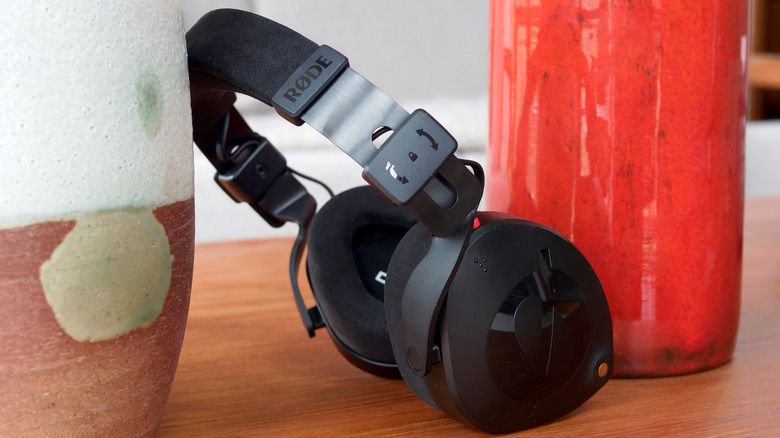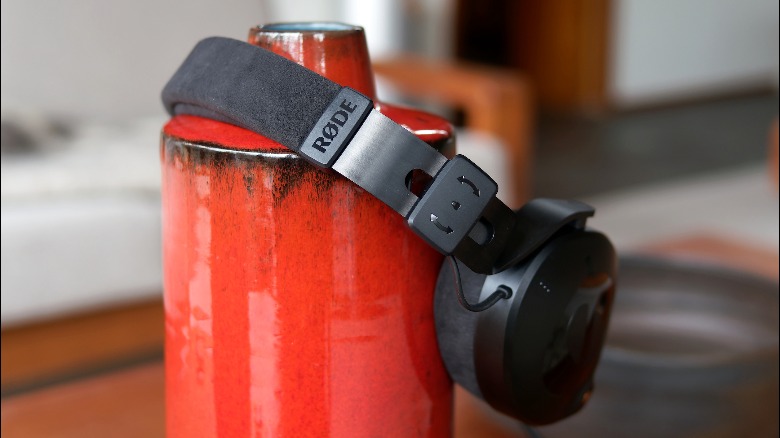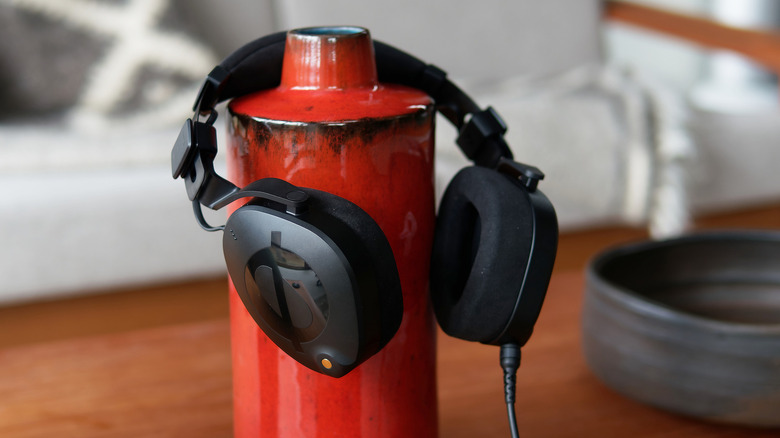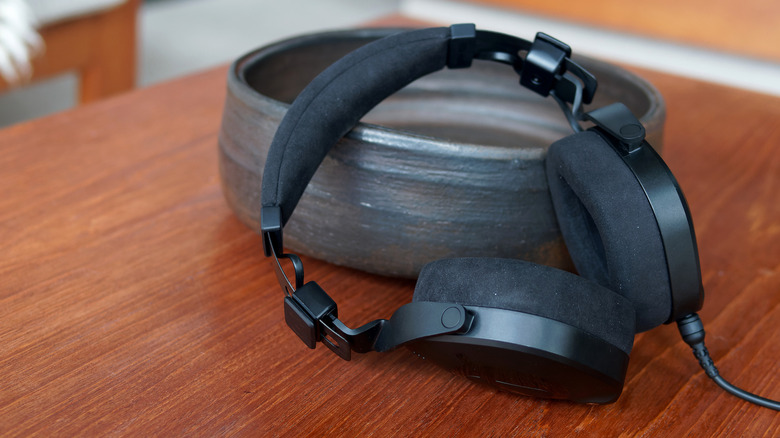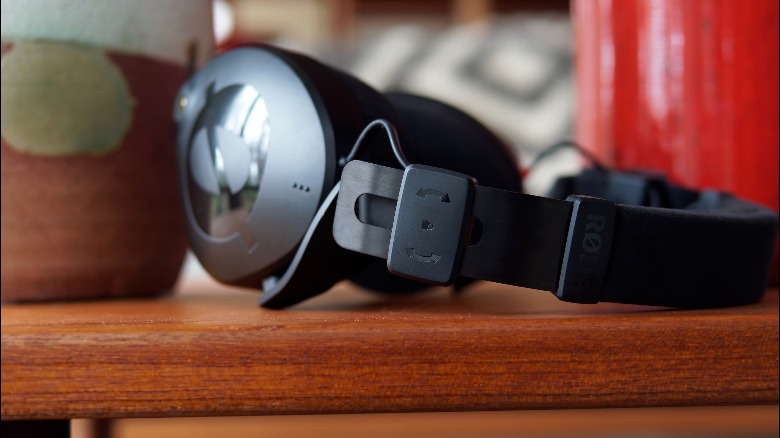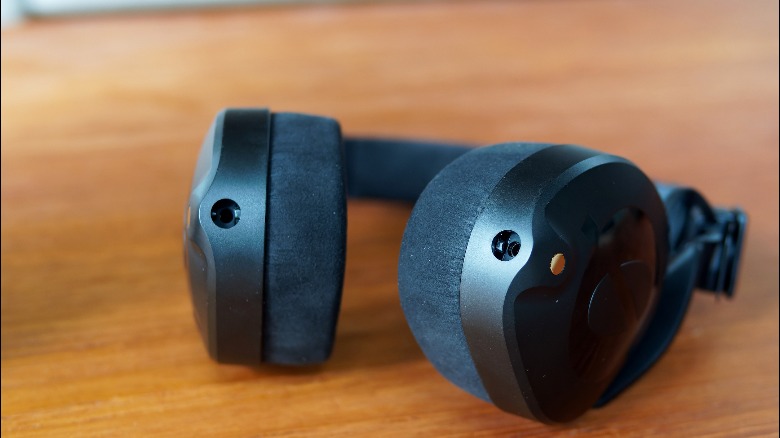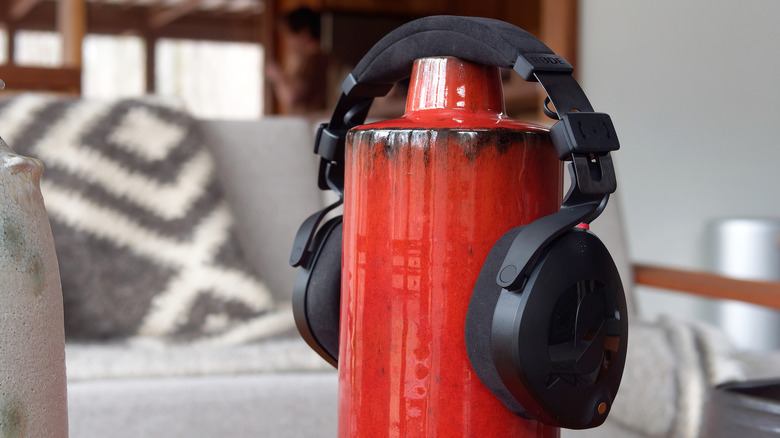These New Rode NTH-100 Headphones Surprised Me On Sound And Price
Australian audio company Rode may be best known for its microphones, but the tech manufacturer is wading into a completely new segment of the market with the NTH-100, its very first set of headphones. While some headphone-makers build a reputation for their audio tuning — Beats headphones are known for their massive helping of bass, for example — Rode's first set of cans opt for accuracy instead, with a pair of custom-matched 40mm dynamic drivers intended not to favor any particular part of the frequency range.
That probably shouldn't come as a surprise, really, given the company's current offerings. Rode's background in microphones and pro audio equipment should've been a solid hint that the company would prioritize transparency above all else when it came to its first foray in the headphones category. The fact that the company is pitching them at audio creators rather than just music consumers is another giveaway.
Rode NTH-100's astonishing price tag
It's not to say that music doesn't sound good in Rode's headphones. Fed with some high-bitrate tracks, the NTH-100s are clean and straightforward. If I wanted more high or low end, I could dial that in myself with my music player's EQ settings. By default, the headphones sounded bright without edging into sharpness; firm bass, but without the hefty kick that consumer headphones often provide.
The value showed its hand when I was doing some video editing, the flatter curve proving far more useful when trying to figure out balancing things like background audio and voiceovers. I'm not a music creator, but I suspect Rode's promise that they'd work well for monitoring and mastering stands up there, too.
What's astonishing is the price tag. When I first started listening to the NTH-100s, I didn't know Rode's final figure: $149. I'd have guessed at twice that amount, honestly.
These headphones sport an unexpectedly thoughtful design
Rode's hardware design looks simple at first glance, but it's unexpectedly thoughtful. The earcups and headband are covered in Alcantara, a soft microsuede which feels great. Inside there's a healthy amount of memory foam cushioning and CoolTech gel. The NTH-100s feel cool on your ears when you first put them on — it's actually a little strange at first — and they stay that way even after extended periods.
The headband adjusts with a solid-feeling metal slide on each side. Rather than the usual ratcheting mechanism, Rode has implemented its own FitLok system: a twist lock for each arm, so that you can adjust them once and know they're not going to shift again unless you want them to. The downside is that they don't fold up for more compact storage, and Rode's included carrying pouch lacks padding.
There's a cable attachment on both earcups, so you can pick the one to use that places the cord in the least-awkward way. Each has a locking connector, into which the included 2.4 meter black cable twist-fastens. Rode also includes a bag of colored ID rings, to help distinguish between different sets of headphones. A 1.2m cable, and versions in brighter colors, will also be available.
The Rose NTH-100s will not be for everybody
When it comes to targeting creators versus ordinary consumers, the differences really come into play. The average person looking for travel headphones might not find the Rode NTH-100s to be the best option for a few reasons. There's no wireless connectivity, for a start — yes, Bluetooth is lossier than a cable, but it's tough to beat the convenience. Additionally there's no active noise cancellation (ANC). These two features are nearly must-haves for the consumer market and if I'm flying, it's still a set of Sony's WH-1000XM headphones that I'm putting in my backpack.
That being said, I wish Sony's headphones were as comfortable to wear as the NTH-100s. Given the $149 price point, Rode makes a compelling argument for having a set of its headphones for home or studio use and keeping them permanently plugged into your creator system of choice.
